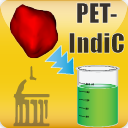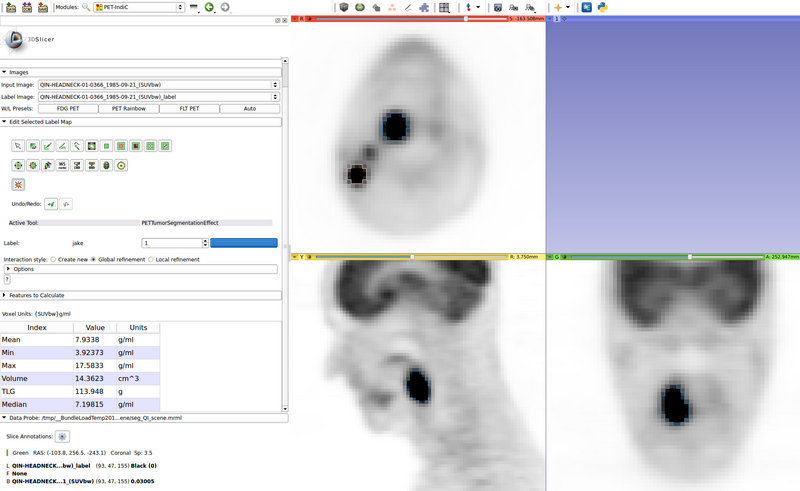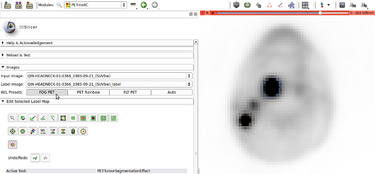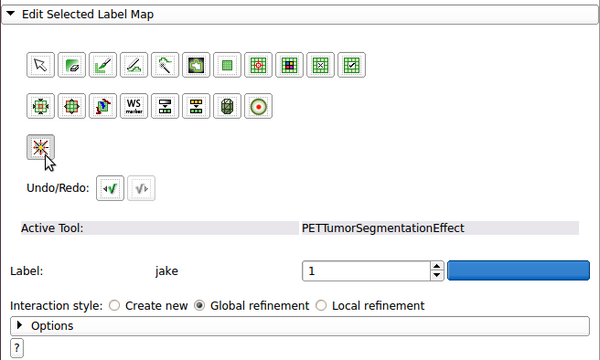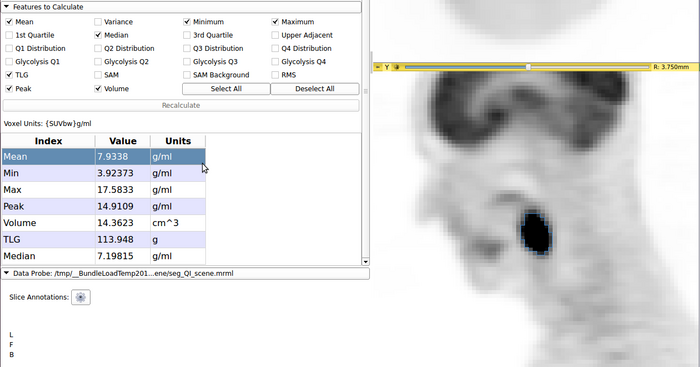Difference between revisions of "Documentation/4.10/Extensions/PET-IndiC"
m Tag: 2017 source edit |
Tag: 2017 source edit |
||
| Line 29: | Line 29: | ||
The PET-IndiC Extension allows for fast segmentation of regions of interest and calculation of quantitative indices. | The PET-IndiC Extension allows for fast segmentation of regions of interest and calculation of quantitative indices. | ||
| − | {{#ev:youtube|https://www.youtube.com/watch?v= | + | {{#ev:youtube|https://www.youtube.com/watch?v=9CIzot8n3hQ}} |
==USAGE== | ==USAGE== | ||
Latest revision as of 14:30, 22 July 2022
Home < Documentation < 4.10 < Extensions < PET-IndiC
|
For the latest Slicer documentation, visit the read-the-docs. |
Introduction and Acknowledgements
|
Acknowledgments:
The UIowa QIN PET-IndiC Extension was funded in part by Quantitative Imaging to Assess Response in Cancer Therapy Trials NIH grant U01-CA140206 and Quantitative Image Informatics for Cancer Research (QIICR) NIH grant U24 CA180918. License: Slicer License | |||||||
|
Extension Description
The PET-IndiC Extension allows for fast segmentation of regions of interest and calculation of quantitative indices.
USAGE
PET-IndiC is an extension of the main Editor module in Slicer
After selecting an input image, a label image is automatically assigned. Window/Level presets are available for PET SUV images. For import of DICOM PET images as SUV images, see the PET DICOM Extension.
Segment the image using the Editor tools. The PET-IndiC Extension is meant to be coupled with the PET-SEG Extension editor effect.
Quantitative indices are calculated automatically whenever a new label is created or the current label is modified. Several indices are available for calculation. The output appears as a table that can be copied and pasted into a spreadsheet.
Modules
Information for Developers
- Source code: https://github.com/QIICR/PET-IndiC
